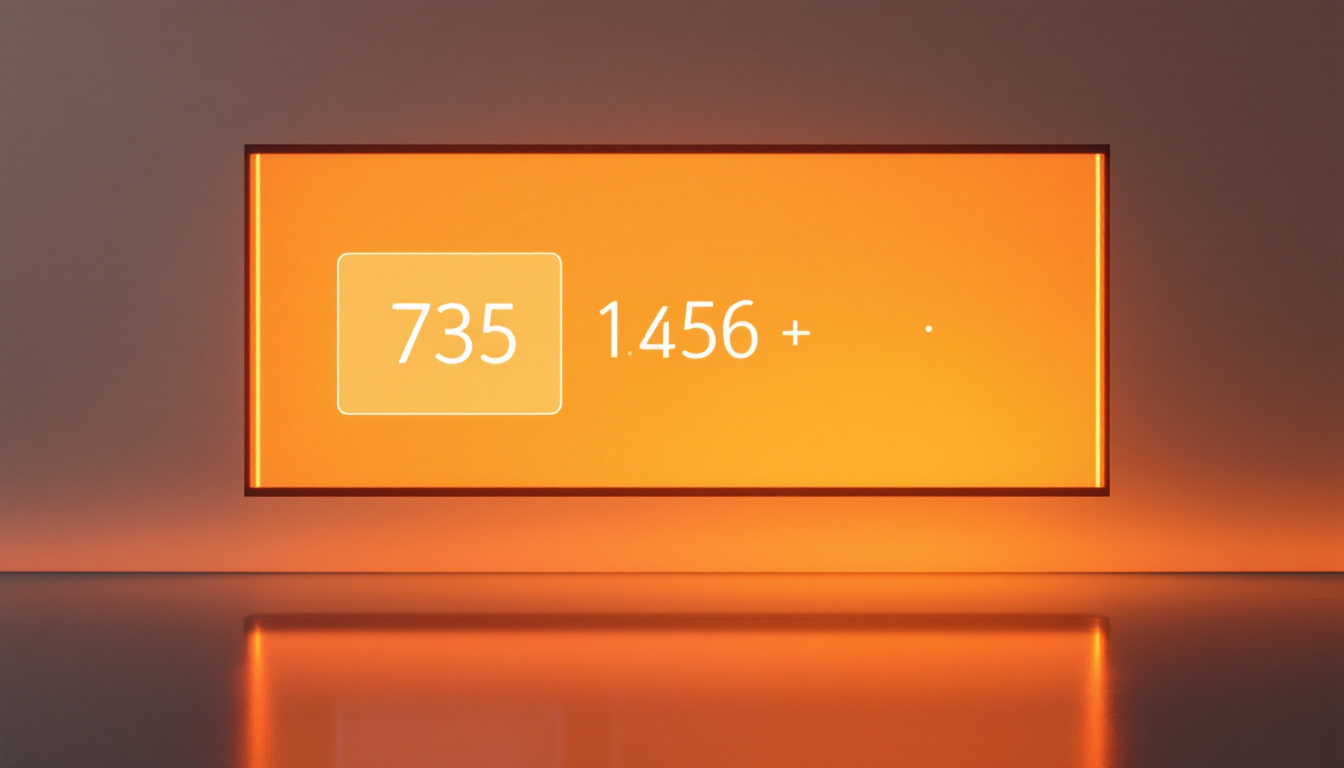The diagonal of a rectangle is a fundamental concept in geometry that has practical applications in various fields, including architecture, engineering, and design. Understanding how to calculate the diagonal can help in making informed decisions about dimensions and layouts. This article will delve into the methods of calculating the diagonal of a rectangle and explore how LED displays can enhance the visualization of this geometric concept.
Understanding the Diagonal of a Rectangle
The diagonal of a rectangle is the line segment that connects two opposite corners. It is a crucial measurement that can help determine the overall size and proportions of the rectangle. The diagonal can be calculated using the Pythagorean theorem, which relates the lengths of the sides of a right triangle to the length of the hypotenuse. This measurement is not only important in geometry but also has practical applications in various fields such as architecture, construction, and design, where accurate dimensions are essential for creating functional and aesthetically pleasing structures.
The Pythagorean Theorem
The Pythagorean theorem states that in a right triangle, the square of the length of the hypotenuse (c) is equal to the sum of the squares of the lengths of the other two sides (a and b). This can be expressed with the formula:
c² = a² + b²
In the context of a rectangle, the two sides (length and width) represent the legs of the right triangle, while the diagonal represents the hypotenuse. Therefore, the formula to calculate the diagonal (d) of a rectangle can be rewritten as:
d = √(length² + width²)
Understanding this relationship not only aids in calculating the diagonal but also enhances comprehension of the geometric properties of rectangles. For example, knowing the diagonal can help in determining the aspect ratio of a rectangle, which is particularly useful in design applications where visual balance is paramount. Additionally, the diagonal can serve as a guide when cutting materials to ensure that they fit perfectly within a given space.
Example Calculation
To illustrate how to calculate the diagonal, consider a rectangle with a length of 6 units and a width of 8 units. Using the formula:
d = √(6² + 8²)
Calculating the squares gives:
d = √(36 + 64) = √100 = 10 units
This example demonstrates the straightforward nature of calculating the diagonal, making it accessible for anyone needing to apply this knowledge in practical scenarios. For instance, if you were to create a rectangular garden bed, knowing the diagonal measurement can help you ensure that the corners are perfectly aligned and that the structure is square. Furthermore, in the realm of computer graphics and digital design, understanding the diagonal can assist in rendering shapes accurately, as it influences how objects are displayed and interacted with on screen.
Applications of Diagonal Measurements
The diagonal measurement of a rectangle is not just an academic exercise; it has real-world applications across various industries. Understanding the diagonal can aid in design, construction, and spatial planning.
Architecture and Design
In architecture, the diagonal measurement is essential for creating balanced and aesthetically pleasing structures. Architects often use diagonal lines to enhance visual interest and guide the viewer’s eye. The diagonal can also inform decisions regarding window placement, door sizes, and overall layout.
For example, when designing a room, knowing the diagonal can help ensure that furniture fits well and that there is adequate space for movement. It can also assist in determining the best angles for walls and ceilings, contributing to the overall harmony of the design. Additionally, diagonal measurements can influence the natural flow of light within a space, as they can dictate how sunlight enters through windows and interacts with various surfaces, thereby enhancing the ambiance and functionality of the room.
Furthermore, in landscape architecture, diagonal measurements play a pivotal role in creating pathways and garden layouts that are not only visually appealing but also practical. By incorporating diagonal lines into the design of walkways or plant arrangements, landscape architects can create a sense of depth and perspective, making outdoor spaces feel more expansive and inviting.
Engineering and Construction
In engineering and construction, the diagonal measurement is crucial for ensuring structural integrity. Engineers use diagonal measurements to calculate load distribution, stability, and safety. For instance, when constructing a roof or a bridge, understanding the diagonal can help in determining the necessary materials and support systems.
Moreover, during the construction phase, contractors often use diagonal measurements to check for squareness. Ensuring that corners form right angles is vital for the overall stability of the structure. By measuring the diagonals of a rectangular area, workers can confirm that the layout is correct before proceeding with further construction. This practice not only helps in maintaining the quality of the build but also minimizes costly errors that can arise from misalignment.
Additionally, diagonal measurements are instrumental in the realm of prefabrication, where components are manufactured off-site and later assembled on location. Accurate diagonal calculations ensure that these prefabricated elements fit together seamlessly, reducing the time and labor required for on-site assembly. This efficiency is particularly beneficial in large-scale projects, where precision is paramount to meet tight deadlines and budget constraints.
LED Displays: A Modern Visualization Tool
LED displays have revolutionized the way information is presented, making complex data more accessible and engaging. When it comes to geometric concepts like the diagonal of a rectangle, LED displays can provide a dynamic way to visualize calculations and results.
Benefits of Using LED Displays
One of the primary benefits of LED displays is their ability to present information in real-time. This feature is particularly useful in educational settings, where students can see calculations unfold before their eyes. By using an LED display to show the steps involved in calculating the diagonal of a rectangle, educators can enhance understanding and retention.
Additionally, LED displays can incorporate interactive elements, allowing users to input different lengths and widths to see how the diagonal changes. This interactive experience can deepen comprehension and make learning more enjoyable. The vibrant colors and sharp contrasts of LED technology also capture attention, making it easier for students to focus on the material being presented. This visual stimulation can lead to increased engagement, encouraging students to participate actively in discussions and problem-solving activities.
Applications in Education
In classrooms, LED displays can be used to teach geometry concepts, including the diagonal of a rectangle. Teachers can present visual aids that illustrate the relationship between the sides and the diagonal, reinforcing the Pythagorean theorem in a practical context. By projecting animated diagrams that show how the diagonal is derived from the lengths of the rectangle, students can visualize the theorem in action, bridging the gap between abstract concepts and tangible understanding.
Furthermore, LED displays can be employed in workshops and seminars, where participants can engage with the material through hands-on activities. By allowing attendees to manipulate variables and observe the outcomes on a display, the learning experience becomes more immersive and impactful. Beyond geometry, LED displays can facilitate learning across various subjects, from physics to art, by providing a versatile platform for visual representation. For instance, in a physics class, students can visualize the trajectory of a projectile in real-time, enhancing their grasp of motion and forces. This adaptability makes LED displays an invaluable tool in modern education, fostering a collaborative environment where learners can explore and experiment freely.
Choosing the Right Calculator for Diagonal Measurements
With advancements in technology, various calculators are available that can simplify the process of calculating the diagonal of a rectangle. Choosing the right calculator can enhance efficiency and accuracy, whether for educational purposes or professional applications.
Types of Calculators
There are several types of calculators that can assist in diagonal calculations. Scientific calculators typically offer functions for square roots and exponentiation, making them suitable for geometric calculations. Graphing calculators can provide visual representations of rectangles and their diagonals, further aiding understanding.
For those who prefer digital solutions, numerous apps and online calculators are available. These tools often come with user-friendly interfaces that allow for quick calculations without the need for manual input. Many of these applications also include features for saving and sharing results, which can be beneficial for collaborative projects.
Features to Consider
When selecting a calculator for diagonal measurements, consider features such as ease of use, display quality, and additional functionalities. A calculator with a clear LED display can make it easier to read results, especially in dimly lit environments.
Additionally, look for calculators that provide step-by-step solutions. This feature can be particularly helpful for students who are learning the concepts for the first time, as it allows them to follow along and understand the reasoning behind each step.
Conclusion
The diagonal of a rectangle is a fundamental measurement that plays a significant role in various fields, from architecture to education. Understanding how to calculate this diagonal using the Pythagorean theorem is essential for making informed decisions in design and construction.
Moreover, the integration of LED displays into the learning and application of geometric concepts has transformed how information is presented and understood. By utilizing modern technology, educators and professionals can enhance their approach to teaching and applying geometry.
As technology continues to evolve, the tools available for calculating and visualizing geometric concepts will only improve. Embracing these advancements can lead to greater efficiency, accuracy, and engagement in both educational and professional settings.
Enhance Your Geometric Visualizations with LumenMatrix
Ready to take your understanding and presentation of geometric concepts to the next level? Discover how LumenMatrix’s advanced LED display technology can illuminate your calculations and designs. From engaging educational environments to impactful professional displays, our range of solutions including Indoor and Outdoor LED Wall Displays, Vehicle LED Displays, and more, are crafted to captivate and communicate with precision. Don’t just calculate the diagonal of a rectangle—showcase it with clarity and creativity. Check out LumenMatrix LED Display Solutions and revolutionize your visual experiences today.































